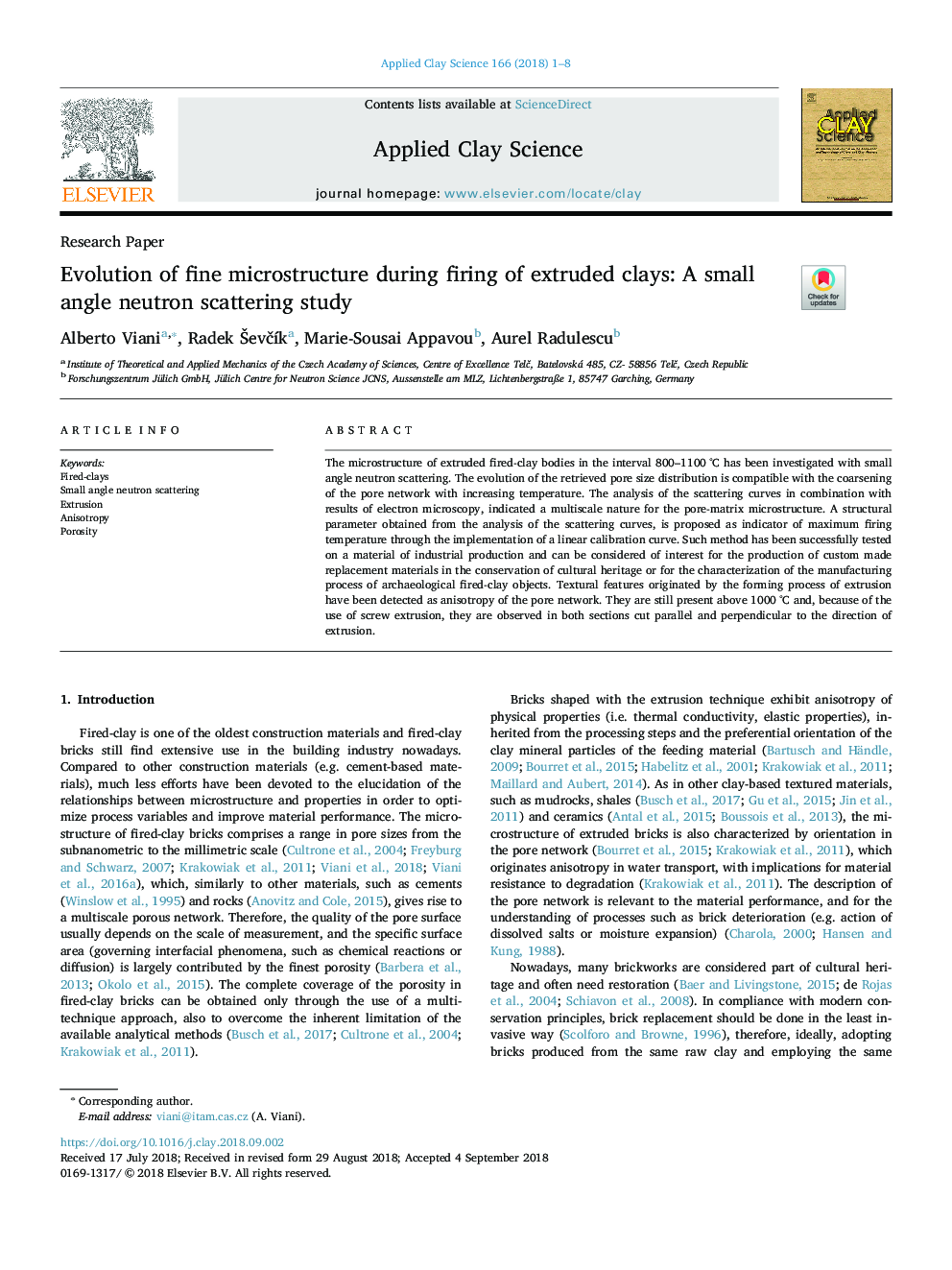| Article ID | Journal | Published Year | Pages | File Type |
|---|---|---|---|---|
| 10156130 | Applied Clay Science | 2018 | 8 Pages |
Abstract
The microstructure of extruded fired-clay bodies in the interval 800-1100â¯Â°C has been investigated with small angle neutron scattering. The evolution of the retrieved pore size distribution is compatible with the coarsening of the pore network with increasing temperature. The analysis of the scattering curves in combination with results of electron microscopy, indicated a multiscale nature for the pore-matrix microstructure. A structural parameter obtained from the analysis of the scattering curves, is proposed as indicator of maximum firing temperature through the implementation of a linear calibration curve. Such method has been successfully tested on a material of industrial production and can be considered of interest for the production of custom made replacement materials in the conservation of cultural heritage or for the characterization of the manufacturing process of archaeological fired-clay objects. Textural features originated by the forming process of extrusion have been detected as anisotropy of the pore network. They are still present above 1000â¯Â°C and, because of the use of screw extrusion, they are observed in both sections cut parallel and perpendicular to the direction of extrusion.
Related Topics
Physical Sciences and Engineering
Earth and Planetary Sciences
Geochemistry and Petrology
Authors
Alberto Viani, Radek Å evÄÃk, Marie-Sousai Appavou, Aurel Radulescu,
